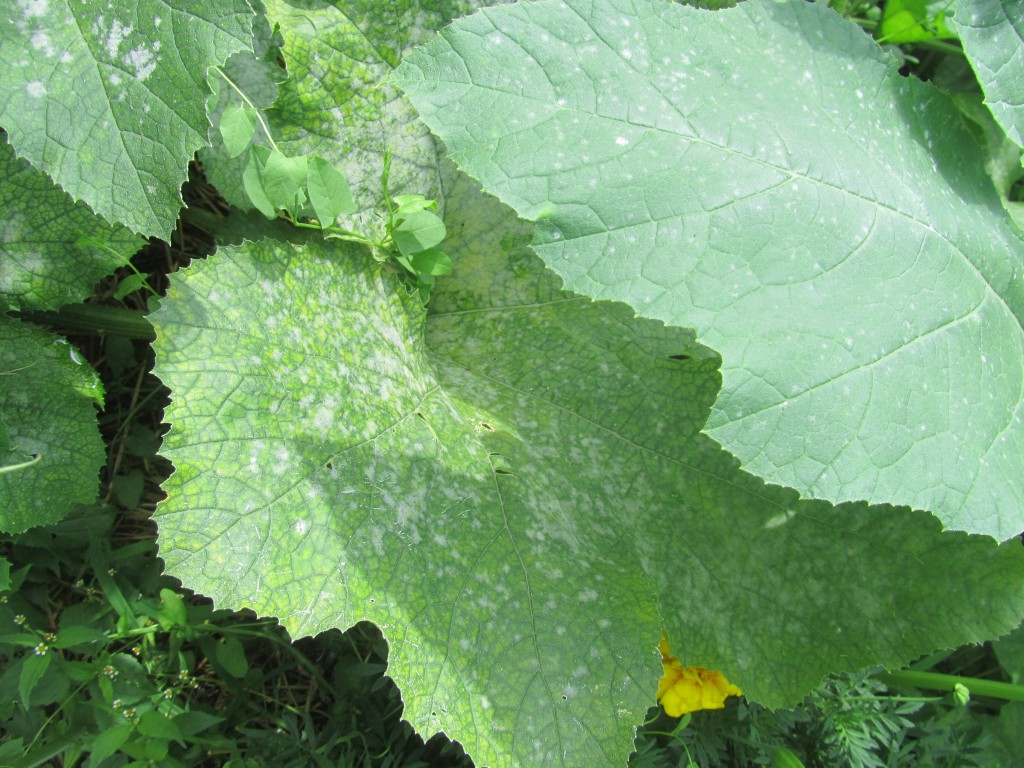Growing pumpkins and squash has changed sine the early days early days of my career. Back then, pumpkins rarely had any problems whatsoever. You could just plant some seeds, keep the patch weeded and you were pretty much guaranteed a fine crop.
This year demonstrates how times have changed. In addition to the squash vine borer and squash bug that I talked about the last couple of weeks, we are now seeing powdery mildew on our pumpkins and squash.
Powdery mildew shows up as a white powdery-looking coating on the surface of the leaves. It eventually cause the leaves to turn yellow and die. Under certain conditions it will eventually kill the entire plant.
We’ve had textbook weather conditions for the development of powdery mildew. This type of mildew is a fungus that thrives when daytime temperatures are high and nighttime temperatures are low enough to form morning dew.

Some varieties of pumpkins and squash are more resistant to powdery mildew than others. Here are two different varieties growing side by side.
Unlike most other fungi, powdery mildew does not need liquid water to infect a plant and grow. High humidity within the leaf canopy provides the environment powdery mildew requires.
We do not see much powdery mildew during rainy years. As a matter of fact, one non-chemical approach to controlling powdery mildew takes advantage of this. Spraying the surface of the leaves with overhead irrigation will wash off much of the infection. It also will cause existing spores to absorb so much water that they burst, greatly reducing the source of new infection. This method only works if the area is well drained, otherwise you will end up causing other problems due to excess water.
Commercial chemical and organic formulas are available on the market to control this disease. I’ve been using a homemade concoction that has been working pretty well for me. I mix one table spoon of baking soda and two tablespoons of Murphy’s Oil Soap to a gallon of water. Spray it onto the leaves no more than every seven to ten days. It’s important to use this ratio, a stronger solution will damage leaves.
The spores from the species of powdery mildew that infects the squash family of plants does not survive Michigan winters. Spores are blown in to Michigan on southerly winds each spring to start a new cycle of disease.
Powdery mildew is very species specific, meaning each species of plant is infected a specific strain of fungus. For example, the powdery mildew that infects lilacs cannot spread over to squash and vice-versa.
This, I hope, will be the last problem we’ll have to deal with on our vine crops this year.
Bob